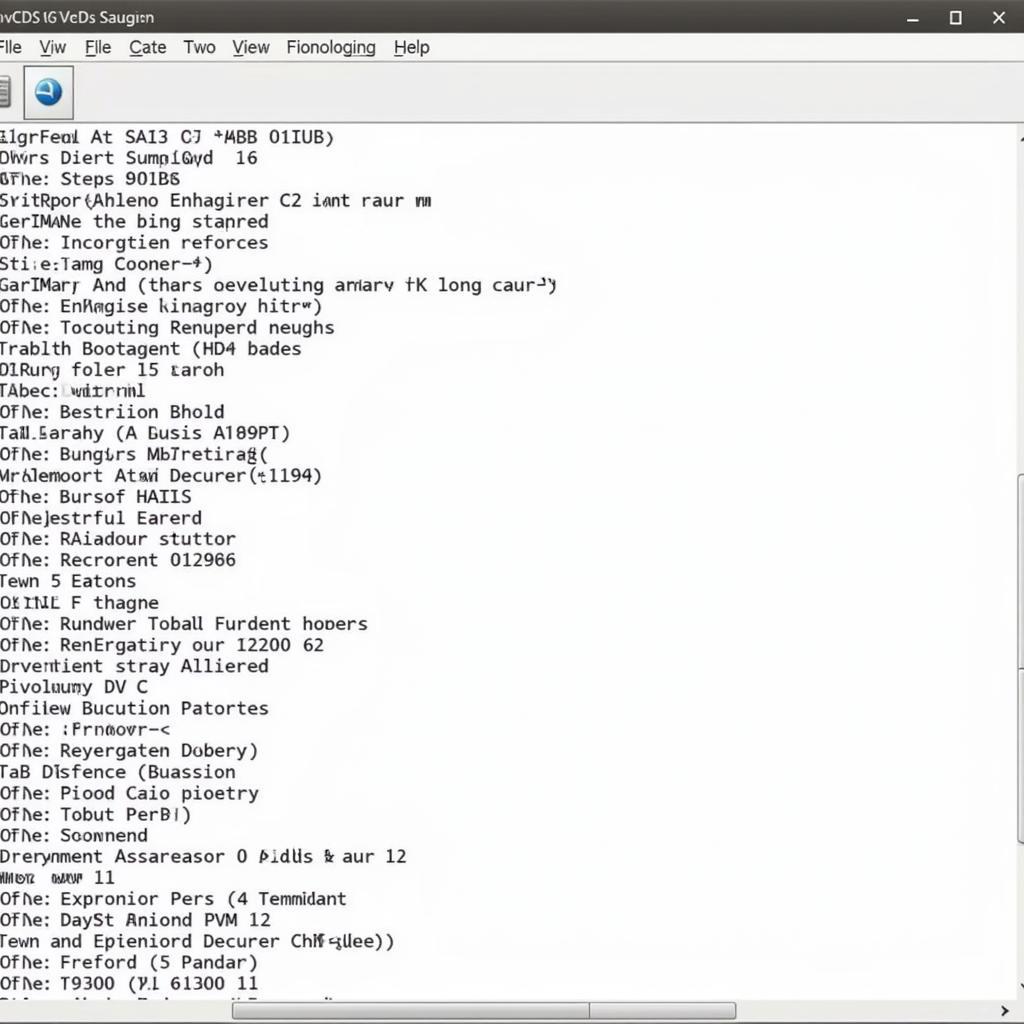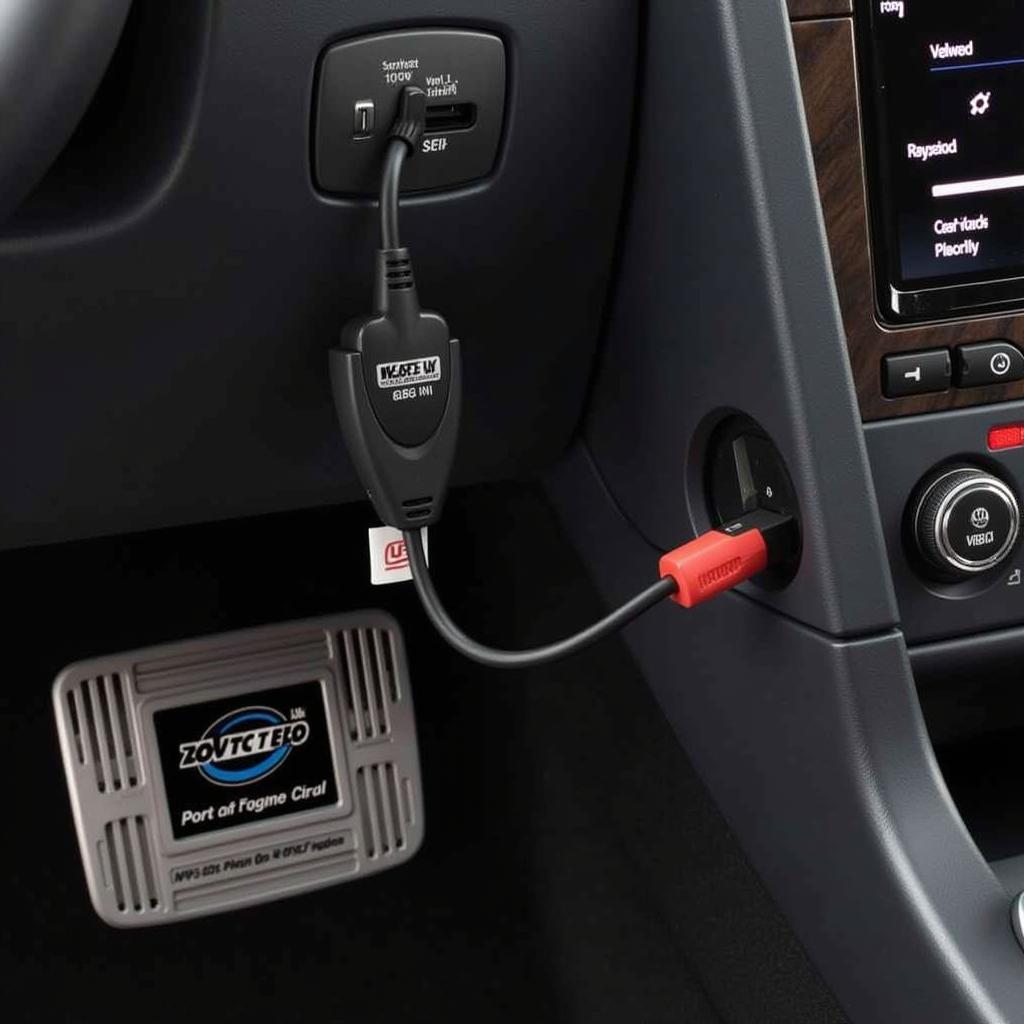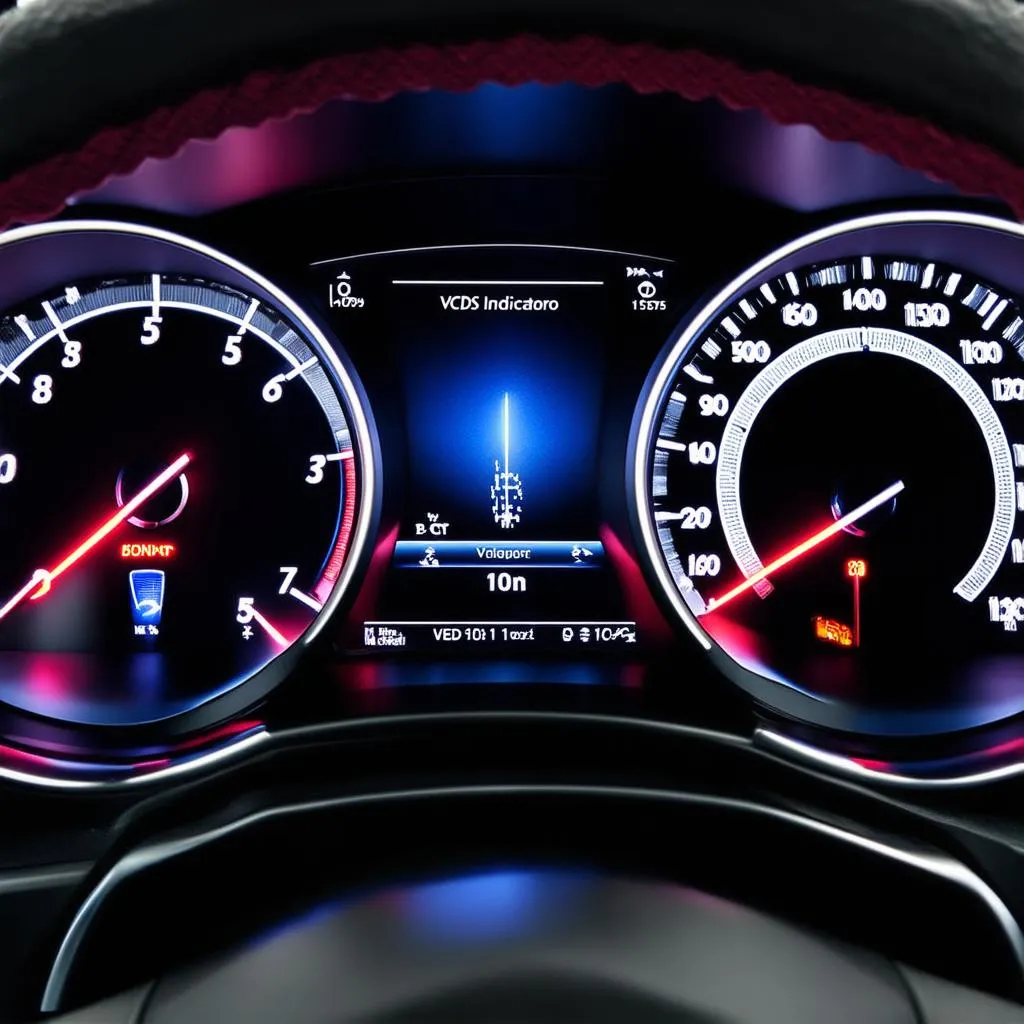VCDS, short for “VAG-COM Diagnostic System,” is an essential tool for any Volkswagen owner or technician. This vw vcds tutorial provides a comprehensive guide to understanding and utilizing VCDS, empowering you to diagnose and resolve issues with your VW vehicle effectively. After reading this tutorial, you will be familiar with common VW diagnostic procedures using VCDS.
Using VCDS effectively allows you to access, analyze, and even modify the various control modules within your vehicle. This powerful diagnostic software opens up a world of possibilities, from identifying the source of a check engine light to customizing comfort settings. This vw vcds tutorial aims to demystify the process and provide you with the knowledge to confidently use VCDS. After reading this vcds tutorial, you will be well on your way to becoming proficient with this invaluable diagnostic tool. See our vcds tutorial vw for more introductory information.
Understanding the Basics of VCDS
Before diving into specific procedures, it’s crucial to understand the core functionality of VCDS. The software acts as a bridge between your computer and your car’s onboard computer system, allowing you to communicate with the various control modules that govern different aspects of your VW’s operation.
Connecting and Communicating with Your VW
Establishing a connection between your computer and your vehicle is the first step. This requires a compatible VCDS interface cable and the software installed on your computer. Once connected, VCDS will identify your vehicle’s model and year, allowing it to tailor the diagnostic procedures accordingly.
Navigating the VCDS Interface
The VCDS interface is designed to be user-friendly, even for those new to automotive diagnostics. It presents a structured menu system, allowing you to select the specific control module you want to access. Within each module, you’ll find a range of diagnostic functions, including reading fault codes, viewing live data, and performing output tests.
Diagnosing Common VW Issues with VCDS
With a basic understanding of VCDS, you can now begin diagnosing common issues that plague Volkswagen vehicles. From engine misfires to electrical gremlins, VCDS can help pinpoint the root cause of the problem.
Reading and Interpreting Fault Codes
One of the primary functions of VCDS is reading fault codes. These codes are stored in the vehicle’s control modules and provide valuable clues about what’s going wrong. VCDS not only displays the codes but also provides detailed descriptions, helping you understand their meaning and potential causes. Need to perform injector calibration? Check out our guide on vcds injector calibration.
Viewing Live Data
Beyond fault codes, VCDS allows you to view live data streams from various sensors and actuators. This real-time information can be invaluable in diagnosing intermittent issues or verifying the effectiveness of repairs. For example, you can monitor engine coolant temperature, fuel pressure, and other critical parameters to identify anomalies. Want the full version? Consider our vcds full option.
 VW VCDS Fault Code Reading
VW VCDS Fault Code Reading
Performing Output Tests
VCDS also allows you to perform output tests on various components. This functionality enables you to activate specific actuators, such as fuel injectors or cooling fans, to verify their proper operation. Troubleshooting a specific VW model? See our guide on vcds golf mk6.
Advanced VCDS Techniques
Once comfortable with the basic functions, you can explore more advanced VCDS techniques. These techniques can unlock further diagnostic capabilities and allow for customization options. Looking to diagnose turbo issues? Our guide on how to check turbo with vcds can help.
Coding and Adaptations
VCDS provides access to coding and adaptation functions, allowing you to modify certain vehicle settings. This can be useful for customizing comfort features, activating hidden options, or adjusting control module parameters. However, it’s essential to proceed with caution when making changes, as incorrect coding can have unintended consequences.
Long Coding
Long coding allows for more granular control over module settings. It involves manipulating hexadecimal values to enable or disable specific features. This advanced technique requires a deeper understanding of the control modules and their functions.
Conclusion
This vw vcds tutorial has provided a comprehensive overview of using VCDS for Volkswagen diagnostics. From basic connection procedures to advanced coding techniques, this guide equips you with the knowledge to confidently troubleshoot and customize your VW. Mastering VCDS can empower you to take control of your vehicle’s maintenance and enhance your overall ownership experience.
FAQs
-
What is VCDS? VCDS is a diagnostic software for Volkswagen, Audi, Seat, and Skoda vehicles.
-
Do I need a special cable for VCDS? Yes, you need a compatible VCDS interface cable to connect your computer to your car.
-
Can I damage my car with VCDS? While unlikely, incorrect coding or adaptations can potentially cause issues. Proceed with caution.
-
Is VCDS user-friendly? The interface is generally intuitive, but some advanced functions require technical knowledge.
-
Where can I learn more about VCDS? Numerous online resources, including forums and tutorials, provide valuable information.
-
Can I use VCDS on other car brands? No, VCDS is specifically designed for VAG vehicles.
-
How often should I use VCDS? It’s recommended to scan for faults periodically or whenever you experience a problem.
For further support, feel free to contact us via Whatsapp: +1 (641) 206-8880, Email: [email protected] Or visit us at: 276 Reock St, City of Orange, NJ 07050, United States. Our customer support team is available 24/7.



